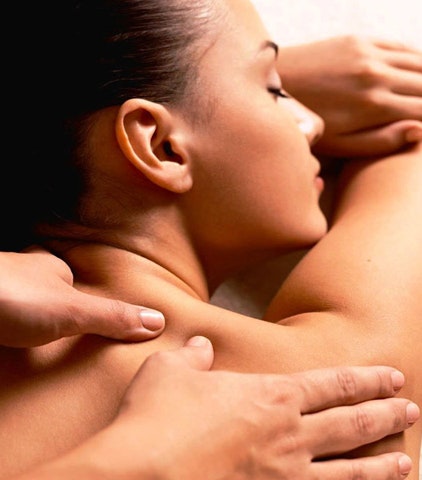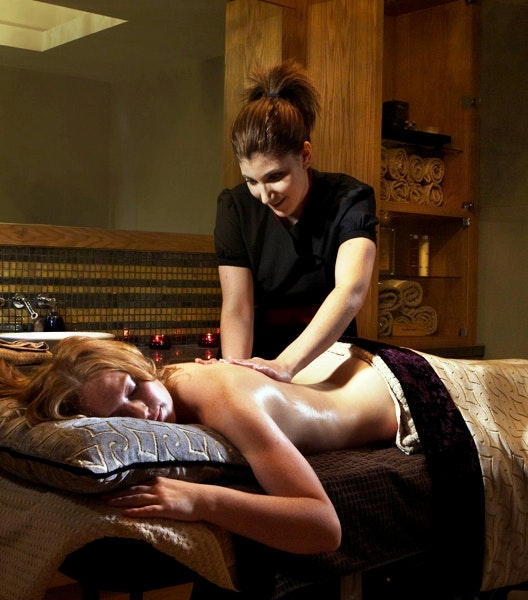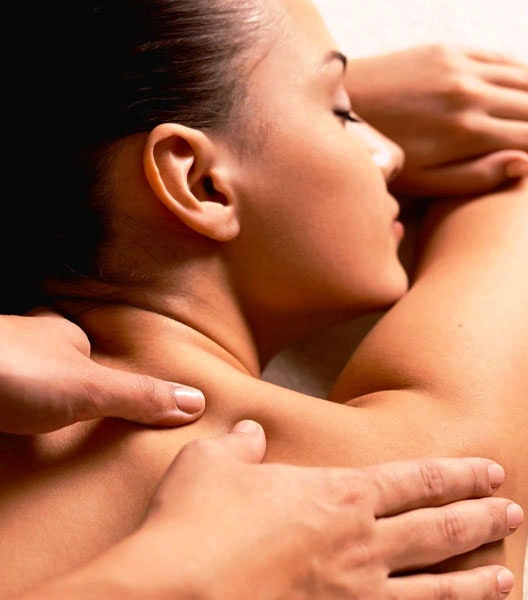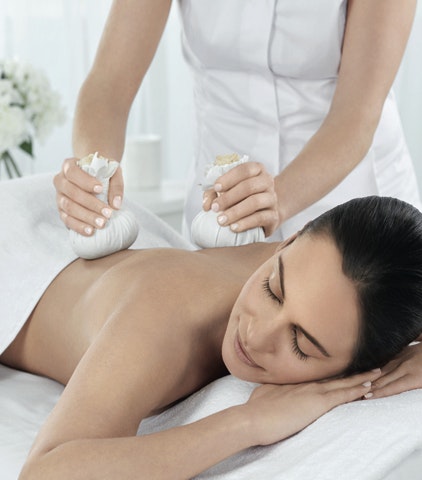
Sports Massage Treatments
In this guide, we look at everything you need to know about sports massage therapy. We highlight what you can expect from this specialised treatment, how sports massages differ from traditional spa massages, and the main benefits of sports massage.
What is a sports massage?
As the name suggests, this type of massage was developed with athletes in mind. It is a form of deep-tissue massage where the primary aim is healing, as opposed to the gentle relaxation you enjoy during a spa massage. The goal of a sports massage is to:
- target specific areas of the body
- protect the body from injury
- treat and prevent aches and pains
- relieve tension
- reduce anxiety
- boost circulation
- promote post-exercise recovery
- improve flexibility and posture
- make you feel good!
What can you expect from sports massage therapy?
The first thing to note is that the pressure applied during a sports massage is firm, as the therapist works deep into the soft tissue. If you’re new to massage or have only enjoyed soothing spa massages, then a sports massage may come as a bit of a surprise! A sports massage can last between 30 and 60 minutes. During this time, the therapist may incorporate a range of techniques, including:
- deep-tissue massage
- shiatsu massage
- muscle stretching
- trigger point therapy (intense static pressure applied to massage points to trigger the body to heal itself)
As this is a tailored treatment, you should have the opportunity to discuss with the therapist what you hope to achieve from the massage – whether to address muscle stiffness or to help you get more from your training regime.
Because of the nature of sports massages, it is advisable to check the credentials of the therapist before you book. A fully trained sports massage therapist will have good knowledge of physiology, so they can ensure their tissue manipulations are safe and therapeutic.
One thing a sports massage therapist cannot do is diagnose an injury. So, if you have hurt yourself or are experiencing any ongoing pain or discomfort, it is important to visit the doctor to find out the root cause and suitable treatment options – which may or may not include massage.
Who can benefit from a sports massage treatment?
You don’t have to be an athlete to benefit from a sports massage. In fact, it can be beneficial for people who spend a lot of time inactive, such as sitting at a desk all day, as this type of massage is great for relieving muscle tension and stress.
If you do exercise regularly or are in training for an event, such as a marathon, incorporating a sports massage into your regime can be beneficial in aiding your recovery and preventing injury. A sports massage can also feel good as a warm-up or cool-down activity.
How often you should have a sports massage depends on several factors, including the reason for the massage. If you just want to relieve tension, you may find the occasional session leads to improvement; whereas if you have a specific injury or are in training for a marathon, you might benefit from more frequent sports massages. Consult your therapist for advice on a recommended massage regime.
Who should avoid sports massages?
While there are lots of benefits of sports massage, it is a robust treatment and, as such, it is not suitable for everyone. In particular, you should avoid a sports massage if you suffer with:
- varicose veins
- circulatory issues
- thrombosis
Sports massages are also not recommended if you are pregnant or undergoing cancer treatment. If in doubt, check with your doctor before booking and always let the therapist know about any underlying medical conditions or injuries ahead of your appointment.
What’s the difference between a sports massage and a deep-tissue massage?
The sports massage evolved from deep-tissue massage techniques, so there are lots of similarities between the two treatments.
The deep-tissue massage works into the layer of muscles and connective tissues to release built-up toxins and lactic acid, encourage blood flow, and reduce tension. Like the sports massage, the therapist uses firm pressure, which can become uncomfortable (but should not be painful).
One of the main differences is that the deep-tissue massage can work the whole body, while the sports massage is often targeted to specific areas. As noted above, trained sports massage therapists have enhanced knowledge of the human body and use a wider variety of techniques to release muscle tightness.
With both types of massage, be aware you may feel a bit sore for a couple of days following the treatment.
Where can I receive a sports massage or deep-tissue massage?
You may think that you need to go to a physiotherapist, gym or rehabilitation clinic for a sports massage, but they can be booked as a standalone treatment at selected spas. Deep-tissue massages are also available at certain spas and feature as options in some of our spa day and spa break packages. The benefits of having a spa sports massage or deep-tissue massage are that you can also enjoy the other treatments and leisure facilities on offer, such as gyms, pools, hot tubs and steam rooms.
Sports massage therapy: frequently asked questions
Here are the answers to some common questions about enjoying sports massage therapy.
What should I wear to a sports massage?
You can wear what you would like to the massage. Loose clothing is recommended. On arrival at a spa, you will be asked to change into a robe, under which you can wear underwear or swimwear. For a targeted sports massage, the therapist will need to access the affected parts of the body. Nudity will not be required, unless you’re having a full-body massage, in which case, the therapist will uncover each part of the body in turn, leaving the rest covered. Feel free to raise any concerns with the therapist. For more, see our guide, What to wear to a spa.
Does a sports massage hurt?
As discussed, this is a robust treatment. However, if you experience any pain or discomfort during the treatment, let the spa therapist know.
How often should you get a sports massage?
It depends on why you’re having the massage. If it’s part of a sports training and recovery regime, you may wish to go once a week or fortnightly. If it is simply for muscle relaxation, once a month might be sufficient. Again, your therapist will be able to advise the optimal frequency for your needs.
How do I know if I need a sports massage?
One sign is if you experience a lot of muscle stiffness and aching, particularly after exercise. Also, if you are doing any kind of intense sports activity, such as long-distance running, you might find a sports massage can improve your performance and help your body recover. A sports massage might also be beneficial if you have tight muscles from a sedentary lifestyle. There are lots of different types of massage, so even if a sports massage is not right for you, another type might be beneficial. Read more in our Spa Massage Guide.
Can a sports massage help sciatica?
Yes, one of the benefits of sports massage therapy is to treat sciatica, as it works to soothe and loosen tight muscles in the lower back and core. But it is important to seek medical advice and to let the massage therapist know about any health issues prior to the treatment.
Should I get a sports massage before a marathon?
A sports massage can benefit your training regime, helping to aid recovery and prevent injury. It is not recommended to have a massage too close to running a marathon. A minimum of three days before the race is advised (or seven days if it is your first massage). A sports massage 24 to 48 hours after a marathon can also be beneficial.
Is a sports massage the same as physiotherapy?
A sports massage is similar to physiotherapy. Techniques used in sports massage are employed by physiotherapists. However, physiotherapy is more of a treatment regime, which involves diagnosis of a problem and manipulation of the affected parts of the body. Patients are often given additional movements to do at home to facilitate their recovery. Physiotherapists are also trained to work on different parts of the body, whereas sports massage therapists focus on the muscle groups.
If you’re ready to book a sports massage at one of our spas, give our team a call today to discuss your options.




